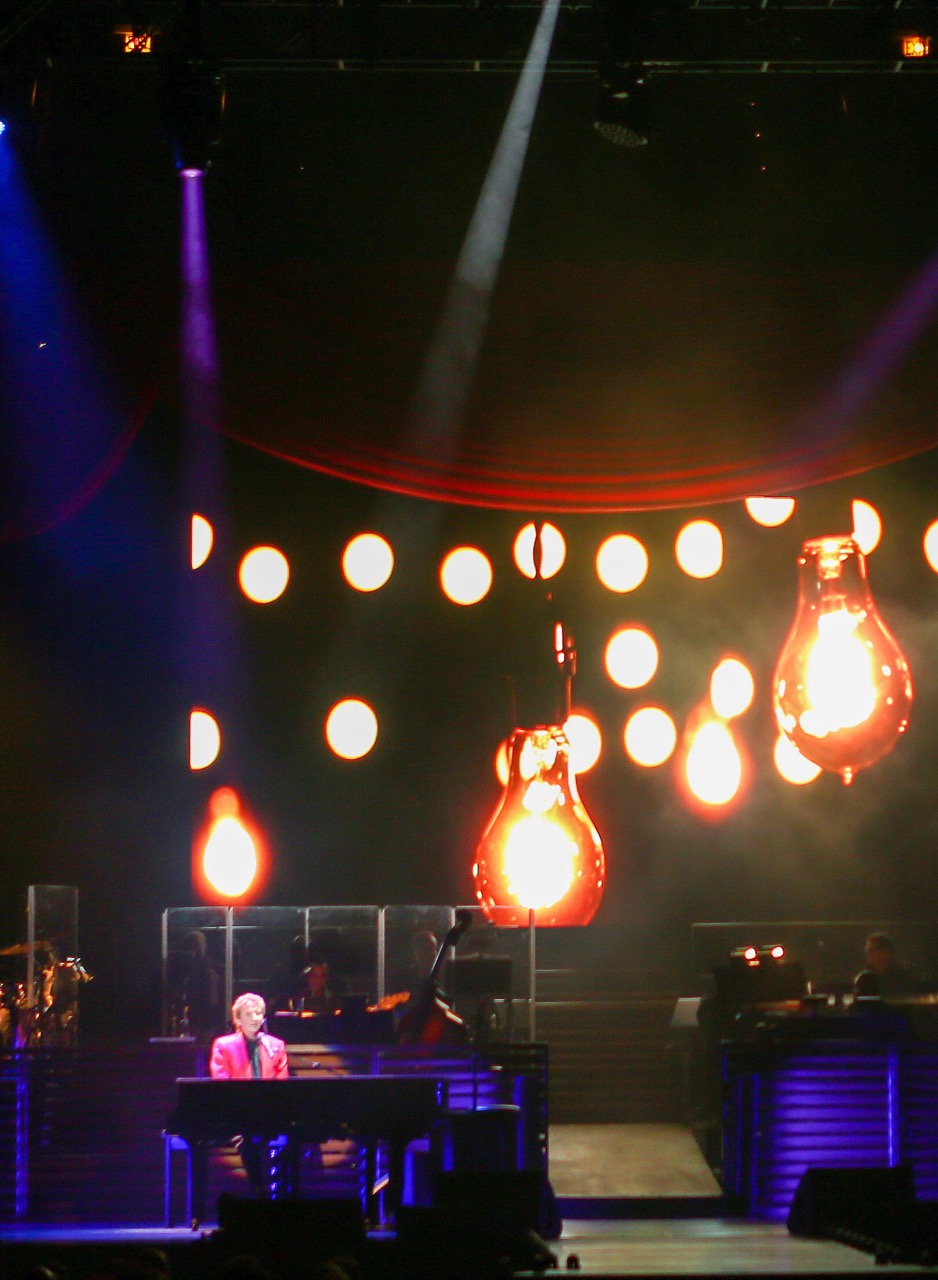I’m With the Band – Seth Jackson and Barry Manilow
Posted on February 7, 2023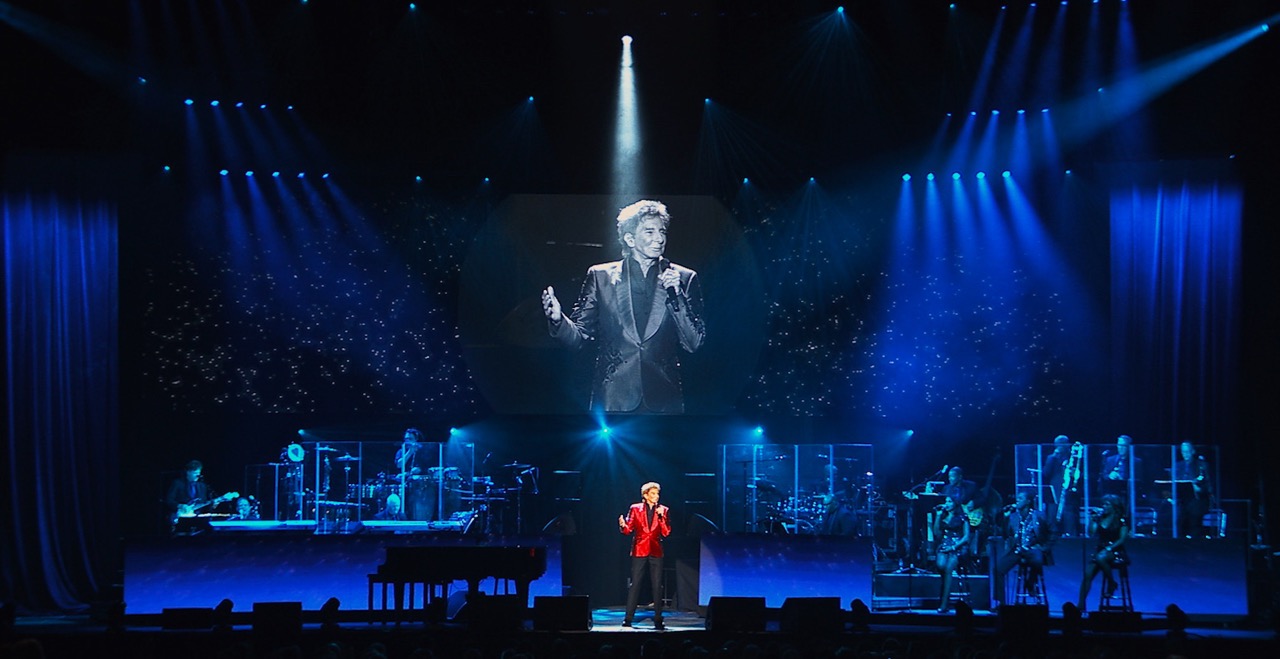
Seth Jackson might not have expected his conversation with Barry Manilow to end quite the way it did when the singer called him at home one day in 1998. The highly acclaimed lighting designer had been touring South America with Kenny G when Manilow’s tour manager contacted him at his hotel and asked if he could fill in for three one-off’s his client was about to do.
Jackson lit the shows and was back home when the phone call came. The legendary balladeer and showman listed all of the lighting cues that, in his view at least, Jackson had gotten wrong in those shows Then, he ended their conversation by saying, “see you next week.”
Sure enough, Jackson next found himself in New York, lighting a glitzy private affair for Manilow. Things did not go well for most involved in that event. The superstar had a cold and the band had an off-night, but the lighting was impeccable. When Manilow saw his LD backstage, he quipped, “Well, I’m glad someone had a great show!”
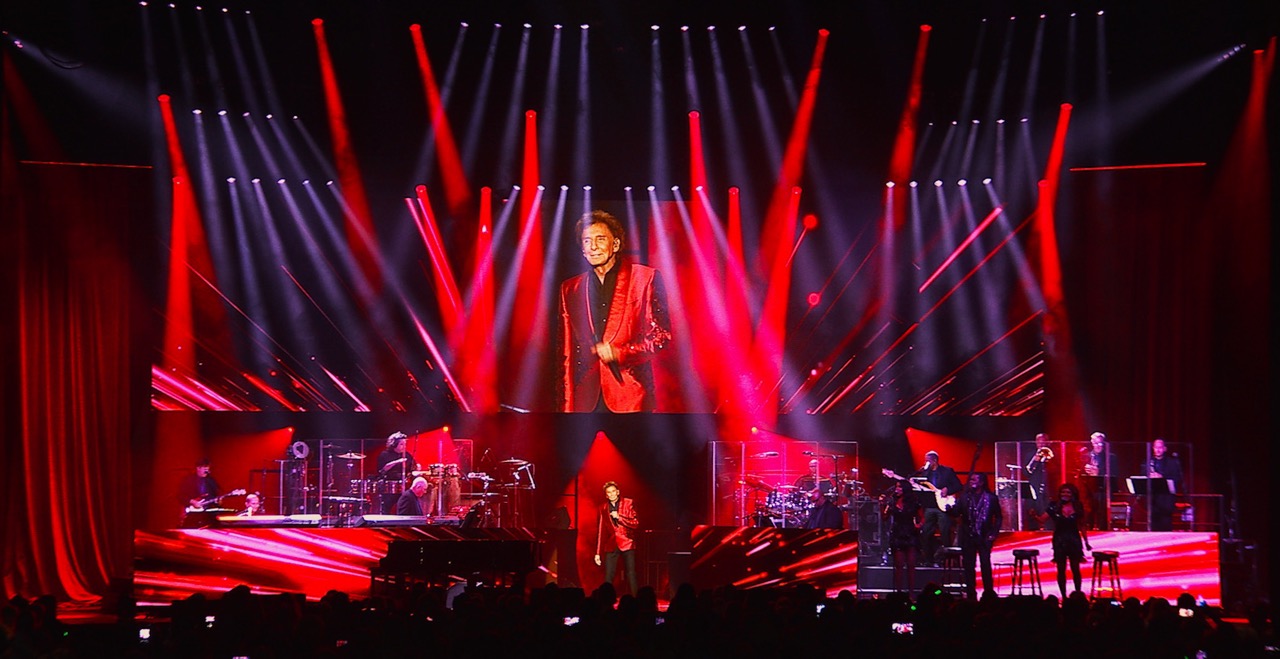
More than two decades later, the Manilow-Jackson relationship is still going strong, encompassing global tours, a hit Broadway show, and most recently, one of the most popular residencies in Las Vegas.
Throughout it all, the legendary performer remains as perfectionistic as ever, closely examining every cue of every song. Jackson wouldn’t have it any other way. Having worked for a broad collection of stars from Toby Keith and Jason Marz, to Selena Gomez and Carrie Underwood, the double Parnelli Award winner says that his approach to design has been greatly influenced by his Manilow experience, adding that he often (figuratively) hears the voice of the star when he approaches projects.
We’re grateful that he shared insights into this relationship with us.
You’ve been designing for Barry for quite some time, how has your relationship changed over the years?
“The job initially started as a lighting director role. Then came a tour that I ended up designing the lights and the set. Then came another tour, and so on. These days Barry is basically in the hands of my business partner, Nathan Alves. As the two-halves of The Darkroom Creative we have become interchangeable with our long-term clients. The big difference now is that the show is so much about video and content that Nate is much more adept in this area than I am. I come in most useful at exploring the big picture, evaluating things with Barry, and helping him communicate to the various programmers and staff his intentions.”
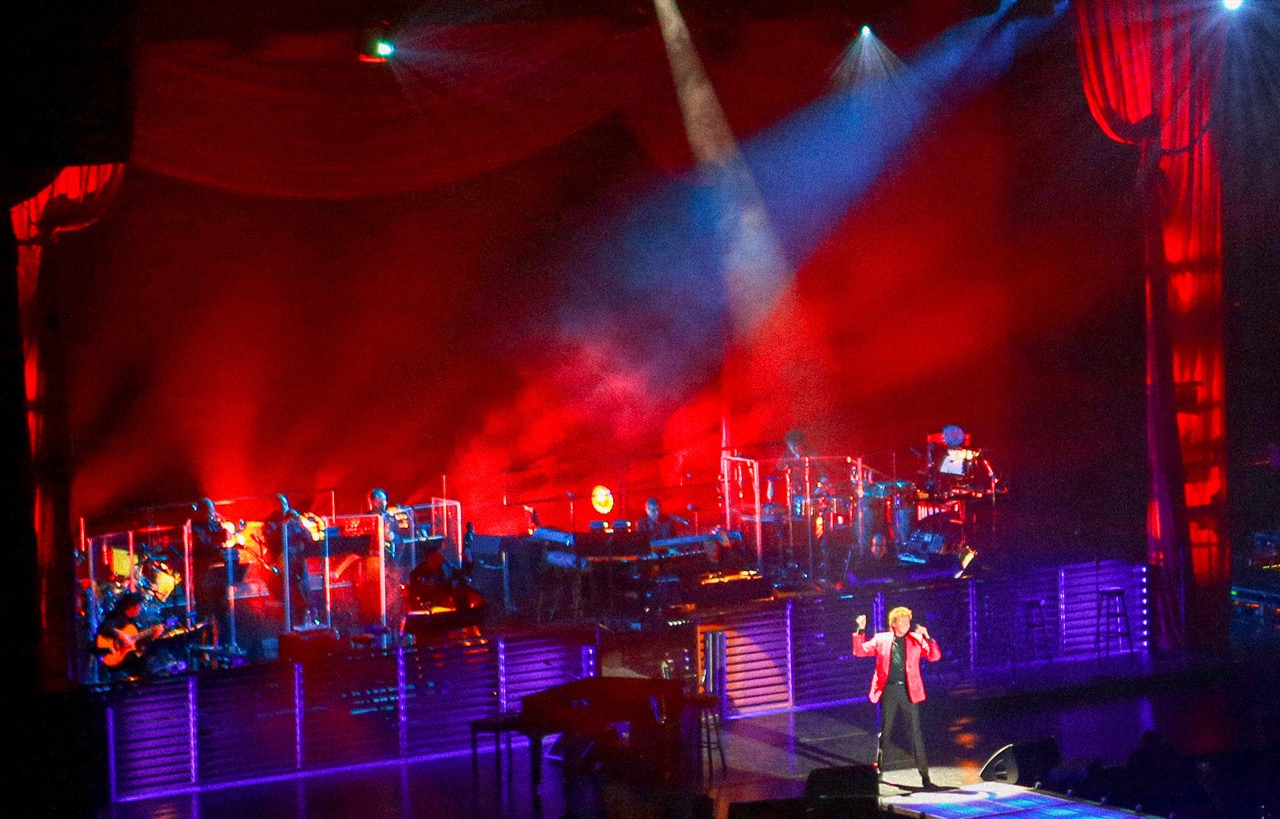
How is it different lighting his residency show at Westgate compare to earlier touring shows?
“Personally, the big difference is I moved into the role of Director. Barry and I started a new way of working together when we first arrived at the Las Vegas Hilton (now The Westgate) in 2005. This involved me getting in the middle of all the visual conversations. Throughout that first five-year run at the Hilton, I was onsite most weekends and he and I would recraft and develop large sections of the show on a regular basis. In those five years he released five new albums – everyone of which ended up with a new feature section in the show. The production manager, Sacha Bambadji, the stage manager, Amber Martin, myself and Barry just would invent and execute these large changes on the spot. It sounds exhausting to think about it now, but we just dove in and did it. Barry always referred to it as our sandbox.”
You’ve designed for many artists, from Jason Mraz, Toby Keith and The Dobbie Brothers, to Selena Gomez, Carrie Underwood and Alice Cooper, so how does Barry rank in terms of his knowledge of an interest in lighting?
“Barry is an exceptional showman. His instincts are pitch perfect and he is frustratingly always correct in his timing, song choice, delivery, and yes – light cues. Barry is the only artist I have worked with that has a strong history with the theatre, and this background shows. We have full tech rehearsals to look at every moment of the show. Barry watches and examines everything. He is his own director. He loves, LOVES, that creative process of ‘making’ the show. His ability to grab hold of an audience and take them on an emotional journey is remarkable to me. Most of what he does he develops and crafts right there sitting next to us examining lighting, timing, sound and even his own blocking and staging. Sometimes it will drive you crazy, but when you see an audience react exactly as he said they would if we get this light cue just right- it’s all worth it.”
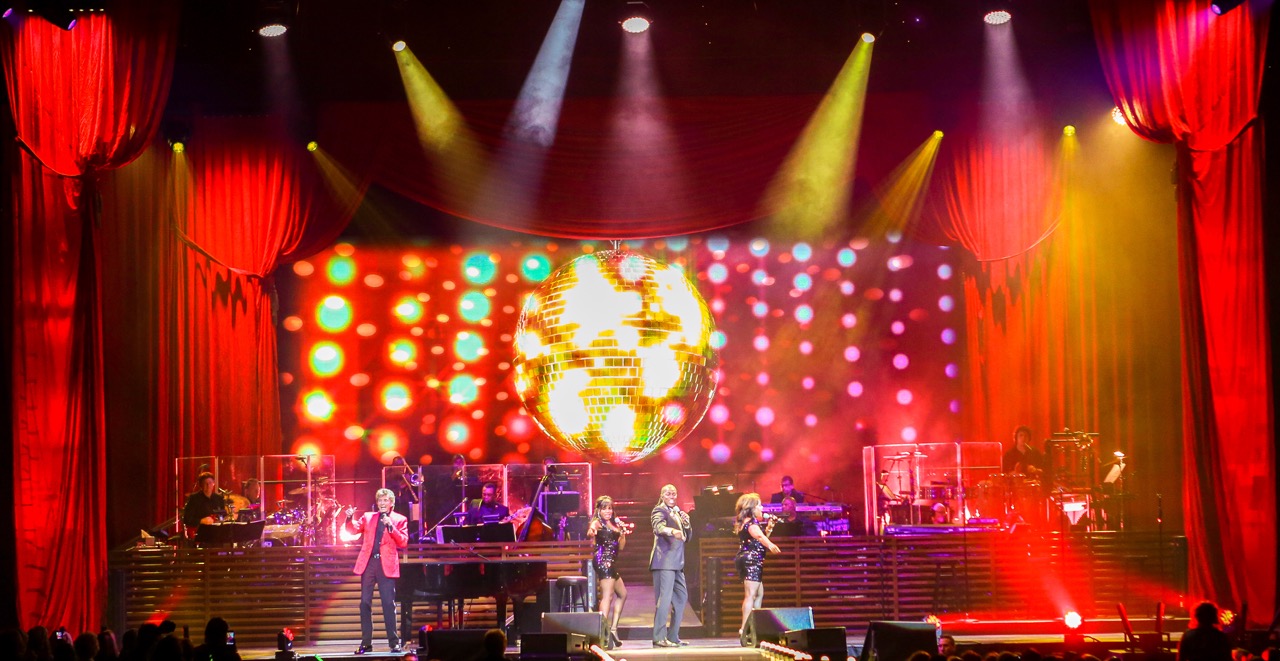
You lit Manilow on Broadway at the St. James Theatre. Do you incorporate theatrical elements into Barry’s residency show?
“Every Manilow show has a certain theatricality to it. The Vegas show is designed to pay homage to Vegas. It is about the classic days of Vegas headliners. It is about the giant spectacle you expect in a modern Vegas show. What you don’t expect is how much heart the show has. It has an emotional element and a story. The live touring show is a celebration of musicians and how the music has connected to his fans for so many years. Manilow Live and Manilow Vegas are two emotionally different experiences even though the setlists are very similar.”
How often do you change or update the show at Westgate?
“It’s not like the old days, that is for sure! Barry can shake up a setlist almost at any moment. There are substitutes for many of the songs in the show. Production changes can now be handled mostly through video content that Nate creates himself. Still, the Westgate version of this show is going into year four – so often, Barry will be tweaking elements of the show and adding new material if something starts to feel stale.”
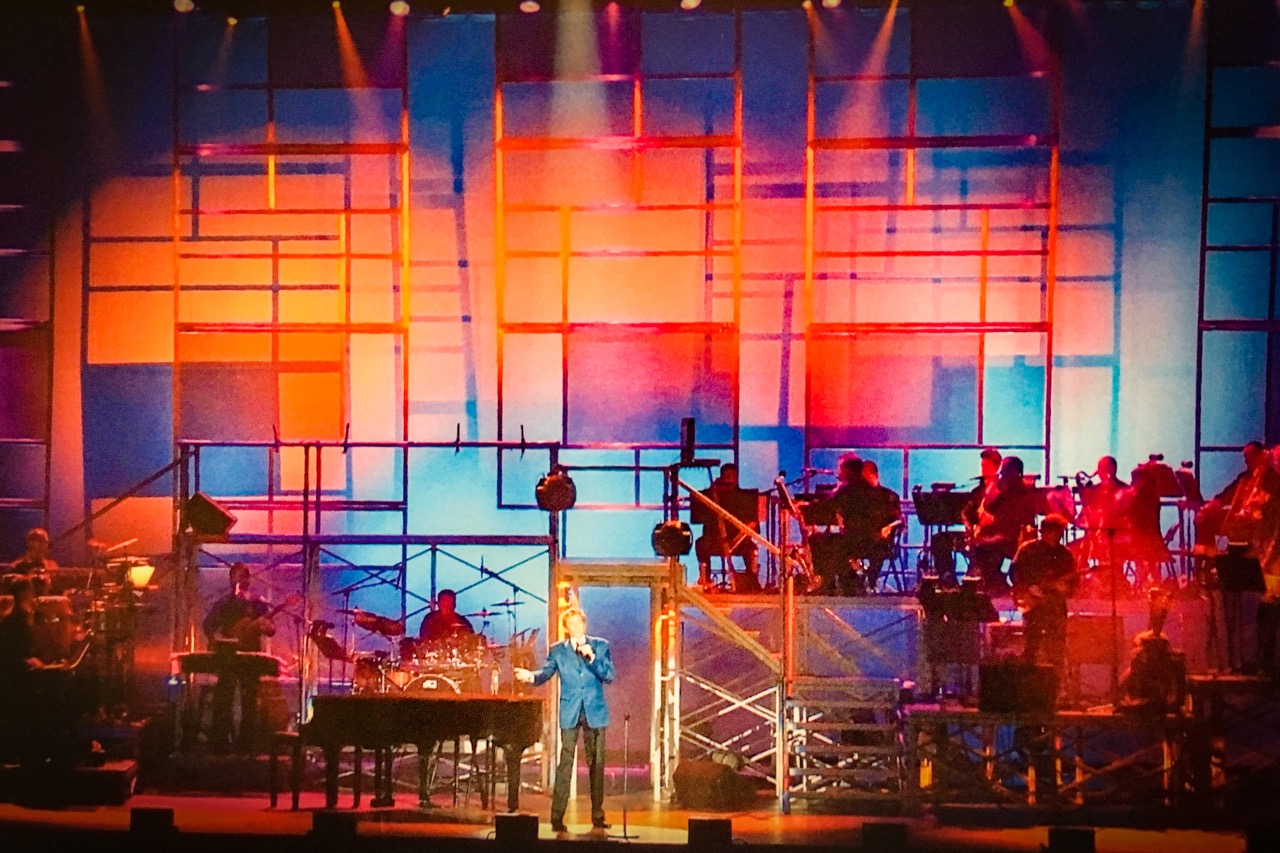
What is the best thing about working for Barry?
“The best thing is that he is a great teacher. He has taught me showmanship to a level that is almost instinctive. When Nate and I are working on other shows we almost always hear his voice in our heads. Phrases like “that’s exciting, but where do you want me to look” absolutely haunt us both.”
What is the most challenging thing?
He is always trying to improve the show experience for the audience. He will never just phone the show in or lock the setlist and go on autopilot. There is always something that can be tighter, sharper, streamlined, or have a bigger impact. No show is ever done. He prides himself on giving notes on the last day of a tour!”
